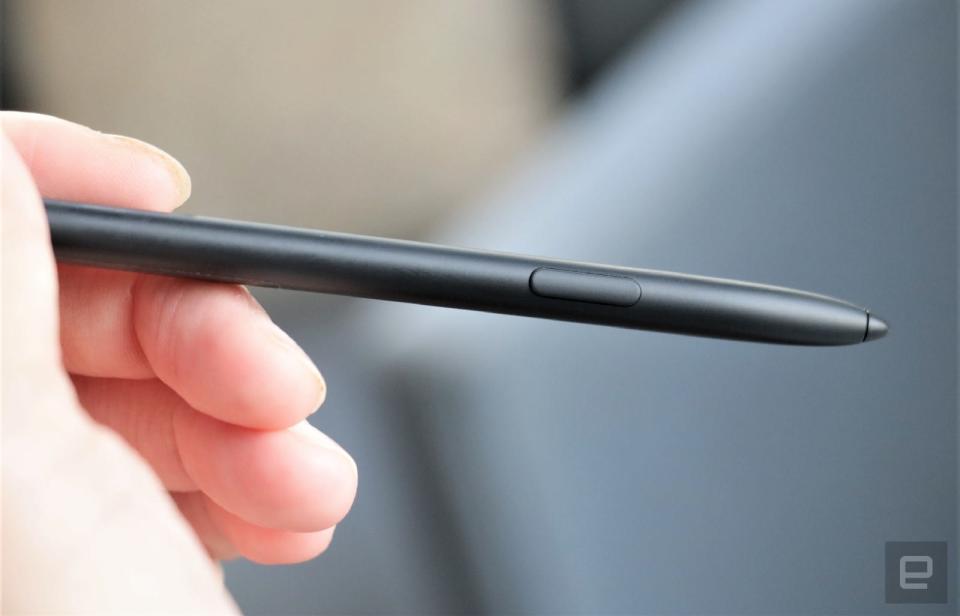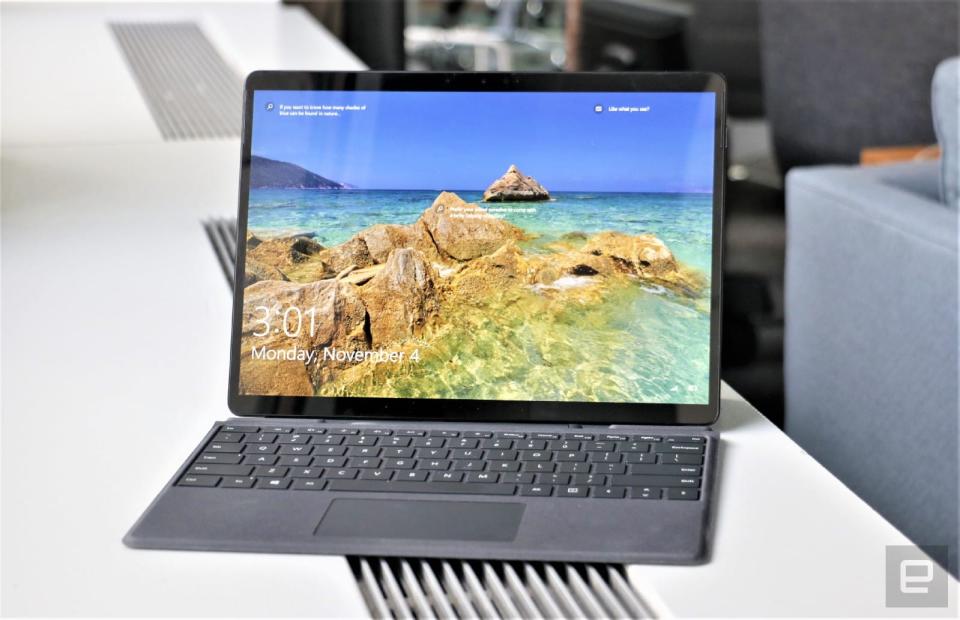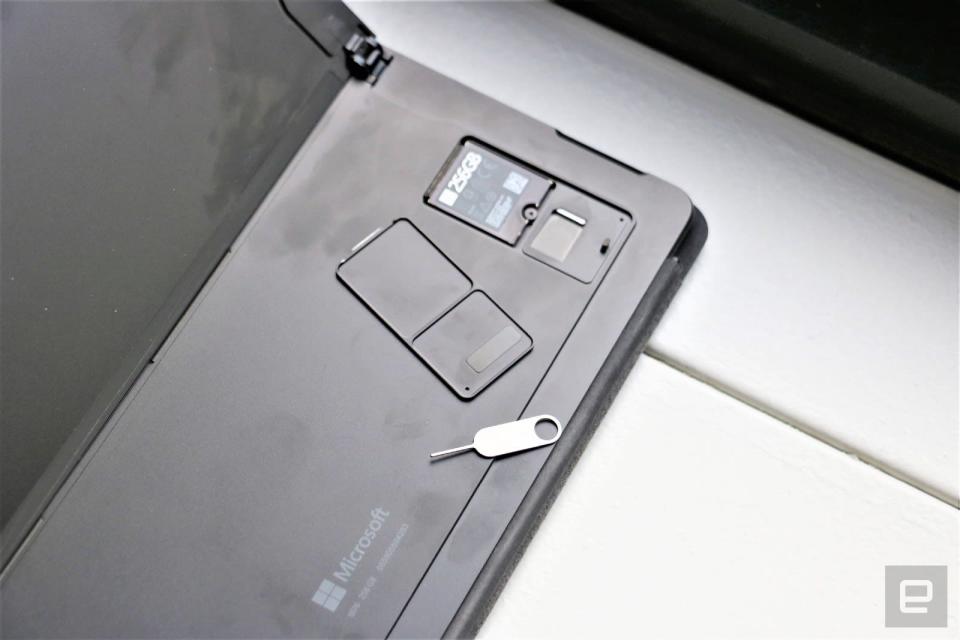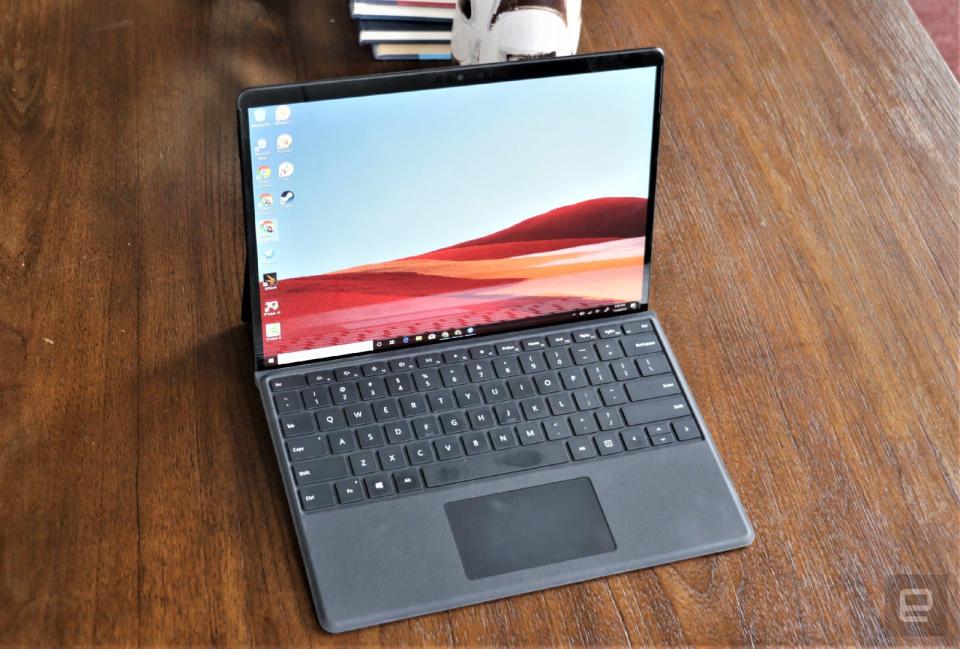Surface Pro X review: Gorgeous hardware marred by buggy software
Microsoft still hasn’t perfected the Windows on ARM experience.
For years now, the Surface Pro has been the best Windows 2-in-1. It delivers a useful, familiar desktop environment for multitasking in a lightweight tablet body. But the line hasn't changed much physically since the Pro 4. A serious redesign is beyond overdue, and thankfully Microsoft is ready to show us something new.
The Surface Pro X is the thinnest Surface yet, with the slimmest bezels I've ever seen on a Microsoft tablet. Cosmetically, this thing is a major upgrade, but the Surface Pro X is also different on the inside. It uses a custom chipset that Microsoft says is the fastest ARM processor in a PC and has an integrated gigabit LTE radio for speedy cellular data. The Surface Pro X is Microsoft's latest attempt at making Windows run on an ARM-powered device, after the mess that was the Surface RT.
Elegant, modern design
But first, let's take a minute to talk about its looks. This thing is gorgeous. After having recently reviewed the outdated-looking Surface Pro 7, I found the Pro X a joy to behold. Its minimal bezels make it look more like the iPad Pro 12.9-inch than a Surface. The device is also impressively thin, at 5.3 mm, and weighs a mere 1.68 pounds. There's still a handy kickstand built in that can rotate almost 180 degrees so the Pro X can be propped up at a surprisingly shallow and useful 15 degree angle. Despite its light footprint, the Pro X feels super sturdy and classy and like a more premium device than the Intel-powered Pro 7.
It's impressive that the Surface Pro X still offers a decent array of ports given its sleek profile. You'll get two USB-C options and a slot for Microsoft's proprietary power charger on the edges, as well as a SIM and microSD card slot under the kickstand. You can recharge the Pro X via the USB-C connection as well as the company's dedicated socket. But, there's no headphone jack to be found.
Display and audio
The thinner bezels and 3:2 aspect ratio on the Pro X's 13-inch screen make it feel more expansive than the Pro 7, too. Granted, that panel is slightly smaller, at 12.3 inches, but the two devices have the same pixel density. The Pro X runs at 2,880 x 1,920 and most videos and images looked crisp and colorful on its display. Audio, on the other hand, was a little underwhelming. I listened to the latest episode of the Engadget Podcast through the tablet's speakers and found the voices a little tinny. Similarly, actors in a blooper reel for The Good Place sounded canned. This isn't a dealbreaker, but if you're looking for rich, rounded audio, you'll need to hook up your own earphones.
New Slim Pen
Microsoft created a new stylus called the Slim Pen to go with the Pro X, and it'll cost you an extra $145. It's like a flattened version of the original Surface Pen, with a button at the top that you can click to grab screenshots or double click to launch the Whiteboard app. Despite the odd shape, the Slim Pen was easy to hold and draw with, and writing with it was just as smooth as rounder styli.

Thanks to its thinner profile, the Slim Pen can fit in a groove carved into the new Signature Keyboard cover that you can get with the Pro X. But this new case costs almost twice the $140 you'd pay for the regular keyboard cover (though Microsoft does bundle the pen with it).
So, let's do the math. If you want the Slim Pen and the keyboard case that can also stow and charge it, get ready to shell out $270 for the bundle. Add that to the tablet's $999 price, and you've got to pay $1,270 for the whole kit. (And that's assuming you're cool with the base model Pro X.) Sure, the iPad Pro 12.9 has the same starting price (albeit with less storage) and Apple's less-comfortable keyboard folio is more expensive at $199. But at least you can use the iPad as a tablet sans keyboard and still enjoy the experience. The Apple Pencil is also at least $20 cheaper than the Surface Slim Pen, depending on the generation.
Microsoft continuing to charge extra for the keyboard is basically deceptive pricing -- you won't want to use Windows on a tablet without it.

Keyboard and trackpad
The consolation, I guess, is that at least you're getting a superior typing case for the money. Microsoft makes the best tablet keyboard in the market, and the version for the Pro X is just as comfortable and well-spaced as some laptops. There's plenty of travel here, and honestly if not for the slightly hollow feel to the deck, it would feel better than even those on proper ultraportables like the MacBook Air and the Galaxy Book Flex.
As for the trackpad below the keyboard, it was also responsive and smooth, though, as with most type covers, I wish the touchpad were bigger.
Performance and app compatibility
There's a lot to love about the Surface Pro X's hardware, but I've been most concerned about its performance. The 3GHz ARM-based SQ1 processor that Qualcomm made for Microsoft is promising, but Windows on Snapdragon has limited app compatibility that makes it difficult to recommend. Older Snapdragon PCs like the ASUS NovaGo or HP Envy X2 annoyed me because there is some serious systemwide lag. Since then, Microsoft has improved its software performance and released ARM64 support for faster programs. Still, I had reservations, and I was right to.
3DMark 11 | ATTO (top reads/writes) | |
|---|---|---|
Surface Pro X (Microsoft SQ1) | 1,998 | 1.85 GB/s / 775 MB/s |
Surface Pro 7 (Core i5-1035G4, Iris Pro) | 2,609 | 1.79 GB/s / 750 MB/s |
Surface Pro 6 (Core i5-8250U, Intel UHD 620) | 2,008 | 1.5 GB/s / 660 MB/s |
We couldn't run the majority of our benchmark tests because, as Microsoft reps told us, "Not all traditional benchmark tests are compatible [with] ARM devices." Oddly, even Geekbench, which we were told would be compatible, wouldn't run. I downloaded a 64-bit version of Slack and couldn't install it, but Telegram for Desktop worked fine.
I was surprised that, despite being unable to run pretty much any of our typical gaming and graphics benchmarks, I was actually able to play a few rounds of Overcooked on the Pro X. The game ran pretty smoothly and quickly, too. But don't expect to play anything more demanding, like Call Of Duty.
Just as troubling as the limited app compatibility are the bugs I experienced. Barely a day after I started testing the Surface Pro X, it hung on me twice. The first time, I was trying to adjust the screen brightness and the panel stopped reacting. It refused to get brighter or dimmer, no matter if I was using keyboard shortcuts, the sidebar slider and or even display settings. I had to restart the Pro X to regain brightness control. (I've encountered the same screen issue two more times since.)

The other glitch happened after I put the Pro X in my tote bag to bring home. When I opened it to get some work done, I was greeted with a Blue Screen Of Death and a message saying "Windows didn't load correctly". I had to restart the PC.
Little problems continued to crop up. I was downloading our benchmark tests from Google Drive in Chrome, and after clicking through three folders, the tab died, saying "Aw Snap! Something went wrong while displaying this webpage." Our video producer tried to play a YouTube video on Edge while shooting B-roll, and the page wouldn't load. He had to restart the browser before he could pull up any clips.
These issues are troubling. They could potentially be fixed with a firmware update, but for now they're definitely a cause for alarm. Even if the tablet never crashed, it would still be difficult to find apps that would run on it.

Speedy, reliable LTE
My favorite thing about the Pro X and most Snapdragon PCs is the gigabit LTE connections they pack. I used a T-Mobile SIM card with the Pro X and was frankly delighted by the fact that I could continue typing this review during a 45-minute train ride out to Long Island. It wasn't just Google Docs that I needed -- the internet connection meant I could look up the specs for competing devices, update our benchmark database and watch Microsoft's promo trailers and our hands-on videos as I collected research. With the speedy transfers the Snapdragon X24 modem provided, all these pages and videos loaded quickly and I could get a lot of work done.
Battery life
Battery life | |
|---|---|
Surface Pro X | 11:45 |
Surface Pro 7 | 7:50 |
Surface Pro 6 | 15:34 |
iPad Pro 12.9 (2018) | 11:30 |
15:08 |
Microsoft promises up to 13 hours of normal use on the Pro X and that estimate is pretty accurate. On our battery test, the Pro X lasted close to 12 hours, which is longer than the (Intel-powered) HP Envy X2's 10.5 hours and a lot more than the Surface Pro 7's 8 hours. The iPad Pro 12.9 clocked a slightly shorter 11.5 hours.
Wrap-up
I'm torn about the Surface Pro X. It's a beautiful piece of hardware that shows Microsoft has excellent engineering chops. When the Surface Pro X works, it's a fantastic experience. The wonderful keyboard, combined with the speedy LTE connection on the go and spacious screen, make it a delight to bang out some documents from wherever. But crashes and compatibility remain major concerns.
Microsoft says for the Pro X is designed for mobile workers who spend most of their days using a web browser or basic productivity apps.

Fair enough, but asking people to pay $1,140 (including the keyboard case) for something that might not run all the apps they need is outrageous. Especially since Chromebooks are just as good at handling browser-based applications and generally cost $500 or less. If you're in the sliver of the population that needs access to a small handful of Windows apps, then maybe the Pro X is sufficient. But bear in mind you'll be paying a hefty premium for Windows, an LTE connection and gorgeous hardware.
